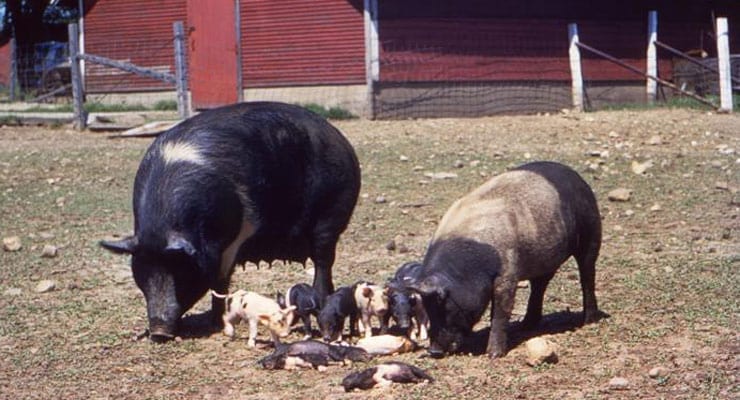A DNA-copying protein from African swine fever virus (ASFV) has a unique structure that may offer a target for drugs designed to combat this highly contagious and lethal disease in pigs.
Currently there are no treatments for ASFV, and control relies on killing entire herds once infection is detected.
Viral replication depends in part on a polymerase enzyme, AsfvPolX, that repairs breaks in the DNA, but the structure of this enzyme has not been determined in detail. Here, the authors used X-ray diffraction and nuclear magnetic resonance to solve the structure at atomic resolution.
Researchers from Fudan University in Shanghai, China found that the enzyme contained a unique binding pocket for nucleotides, not seen in related enzymes in other organisms. They also found several other unique structural features, including a pair of hydrophobic amino acids that interact with incoming nucleotides, and a “platform” created by two basic amino acids that stabilizes a mismatched nucleotide pair, increasing the rate of incorporation of erroneous nucleotides into the DNA chain during the repair process.
Together, these features give the polymerase its unique character of a high rate of DNA replication combined with a high copying error rate.
Blocking the binding pocket with a drug may be a valuable strategy to treat ASFV infection, the team suggest. “Exploiting this unique structural feature to attack the virus may offer a rapid route to develop treatments for this important agricultural virus,” says Yiqing Chen. Although he noted one caveat; the high error rate of the AsfvPolX polymerase enzyme means that the virus mutates rapidly, and therefore may evolve resistance to drugs designed to block it.
Chen Y, Zhang J, Liu H, Gao Y, Li X, Zheng L, et al. (2017) Unique 50 -P recognition and basis for dG:dGTP misincorporation of ASFV DNA polymerase X. PLoS Biol 15(2): e1002599. doi:10.1371/journal.pbio.1002599



